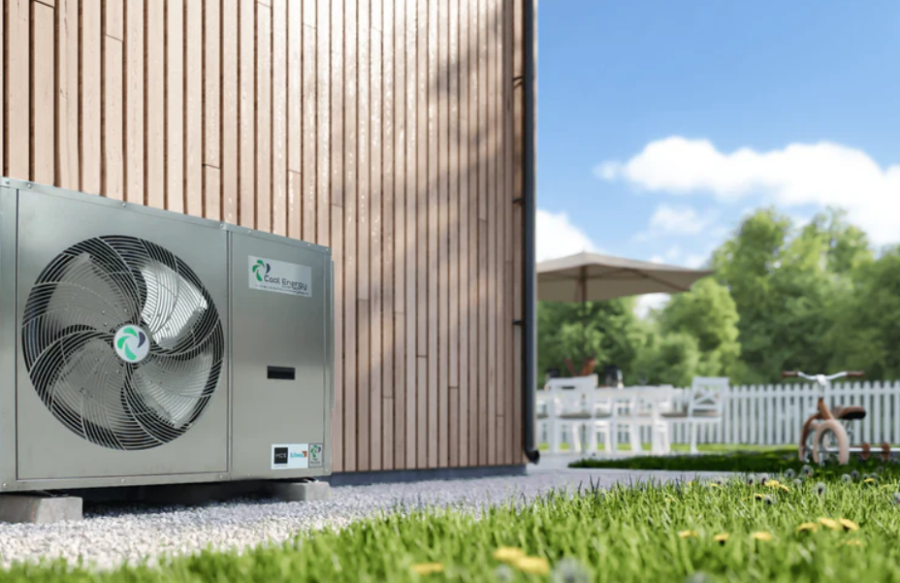If you ask this question, you are either worried about the operation of your heating system or bothered with your electric bill. I belong to the second category.
Let’s shortly review the heat pumps and answer some critical questions about them.

Contents
What is a heat pump?
A heat pump is a kind of HVAC system providing a comfort temperature inside your home based on hot air transfer.
It is interesting
A heat pump as we know it today was constructed as far back as 1856 by an Austrian mining engineer Peter von Rittinger. The first heat pump served for drying salt in salt marshes.
The first ground heat pump systems are believed to be developed by an American inventor Robert C. Webber.
A heat pump is similar to an air conditioner, but is more functional. A heat pump typically will push hot air from your home to the outside, thus cooling your premises, or deliver heat to you from outdoors to warm up the air in the house. The benefit of having a heat pump is the even distribution of hot or cold air on your entire home thanks to the duct system.
Curious statistics
Statistics indicate that heat pumps are most widely used in northern countries like Norway, Sweden, and Finland. In the USA, Florida and Texas can boast the highest number of heat pumps mounted.

Normal heat pump cycles
Generally, a heat pump does two or three cycles within an hour, 10 to 20 minutes each. Thanks to developed technology, modern heat pumps are paired with a programmable thermostat. All you need to do here is to set a desired temperature and leave the rest to the equipment. The traditionally comfortable room temperature is around 20–22 °C (68–72 °F) but alternates due to individual preferences.
Did you know?
Comfortable indoor temperatures may vary depending on place, time and culture. Thus, studies conducted in the 1970-80s revealed that the average indoor temperature in the UK was 15.8 °C (60.4 °F), in Japan it ranged between 13 °C (55 °F) and 15 °C (59 °F), and in Nigeria feel-good amounted 26–28 °C (79–82 °F).
It’s quite natural that with mild weather a heat pump works less frequently and for shorter periods of time (as a rule, 10 to 15 minutes running is enough). But the more temperatures in your house differ from the outdoor temperatures, the more you will need your heat pump to run.
The duty cycle of heat pumps is getting longer upon approaching the max design temperature (0 °F or 90 °F on the other end). Over the cold season when outside temperatures drop drastically (below 40 °For 30 °F), your heat pump does run continuously for a long time, as your home’s heat demand matches the efficiency of the heat pump system.
So how long should a heat pump run per day?
Contemporary heat pumps are designed to work 24/7. They can run as long as needed to guarantee that your home’s temperature is well maintained.
Bear in mind, it is easier for a heat pump to constantly keep a consistent temperature in your premises than to reach the preset parameters as often as you turn it on. Every switching on of your system claims more energy than a non-stop operation. So it is a good practice to leave your heat pump on unless you really don’t need it. This way you not only take care of the heat pump but as well save energy and avoid unreasonably high electrical bills.
There is one more cause not to switch off a heat pump at night in cold months. If the outside temperature falls very low, and your system is off, sometimes a heat pump freezes, which claims a substantial recovery.
Useful to know
A heat pump recycles at its maximum productivity when the outside temperature is above 40 °F. If temperatures outdoors fall below that mark the productivity of a heat pump decreases while raising energy costs.
When the weather is getting warmer, the contrast between the inside and outside temperatures is less considerable and there is no need for your heat pump to run for a long while. If it does so, you should think of a repair or consult a heat pump specialist.

Short cycling
If, on the other hand, your heat pump short cycles, this is another trouble. This may happen when you set different values of a specific temperature for various rooms. Another factor for short cycling may be a clogged air filter that requires cleaning or an obstructed outdoor condenser unit. If no obvious reason for short cycling is detected, you should better consult a heat pump expert.
What else in your heat pump system should put you on the alert
A heat pump plays an important part in our life, particularly in a cold season, when outdoor temperatures drop low. That’s why you’d better know the signs of your heat pump malfunctioning to avoid serious breaks and costly repairs.
Any noise like creaking, groaning, or rattling means that something has gone wrong.
An unusual smell may also be a signal of failure.
A heat pump may freeze, and you notice some ice buildup in your system throughout the cold months. This often happens because of a refrigerant leak.
If a blower is out of order, this may mean anything from overload and short circuit to total breakdown of the system.
You should definitely worry if your heat pump is blowing hot air in summer. Either it is faulty valves or a broken fan, better to consult an expert.
On the contrary, if a heat pump doesn’t blow warm air, it may be caused by an overload, an improperly adjusted thermostat, or even reversing valve runout.
Problems with a condenser fan refer to a shortcut or sometimes to the replacement of a capacitor.
If you detected a leakage in a heat pump, it may be a leaking refrigerant that reduces the efficiency of the unit or more complex problems. Anyway, the best decision is to call a heat pump specialist.
How can we save?
Avoid setting your heat pump’s temperature at 80 °F or above. That will put an extra load and entail your electrical bills to boom.
Make sure your thermostat is programmable, that’s the easiest way to maintain a preferred temperature and control expenses.
Decrease the temperature setting by a few degrees when you leave for several hours and at night. Thus you will save money and ensure better quality sleep.
Interesting fact
According to the National Sleep Foundation, cool air in your bedroom is important for a good night’s sleep. Most doctors recommend maintaining a bedroom temperature in the range of 15,6°C (60 °F) to 19,4°C (67 °F) for the best night’s rest.
Switch off your heat pump when you are leaving for a prolonged interval so as not to waste energy and money.
You may also use solar panels and backup coils as an alternative source of energy to reduce costs.
Make sure your home is well insulated to reduce heat egress.
Try not to change regimes between heating and cooling within a day as it will overload the heat pump.
Do not place a heat pump in the direct sun, a shady place is preferable. The ideal position will be when outside air passes a heat pump on all sides.
Service your heat pump on a rolling basis to prevent faults and expensive repairs and enhance its lifespan.
Conclusion
A heat pump is a very efficient means to keep your home warm and comfy during cold and windy seasons. Or to maintain it nice and cool in intense heat. With a little knowledge of how to take care of heat pumps and where to save, you can find a good balance between cheap heat and comfort for you and your family.
FAQ
How many hours a day will a heat pump run?
A heat pump can run all day long. Heat pumps are developed to keep a specific temperature on the premises, so they will automatically turn on and off to provide the preset parameter. Mind, letting your heat pump constantly run will save you more energy and budget than switching it on and off several times a day.
Is it normal for a heat pump to run constantly?
It is pretty normal in a cold season when the temperature outside goes down to 40 °F or lower. Heat pumps recycle for a long stretch of time to keep your home warm and comfortable. Otherwise, if constant running is not caused by freezing temperatures, ask a pump heat specialist for assistance.
How long should a heat pump run per day in winter?
With 10-20 minutes two or three times in an hour as a usual cycle, in cold winter months a heat pump will predictably run for longer periods to raise and keep the same temperature indoors. No surprise, if a heat pump operates almost constantly when it’s colder than 40 or 30 degrees out of doors. What you can do to give some relief to your heat pump is to bring the set temperature down for a couple of degrees according to your comfort.
How long should a heat pump run at one time?
A heat pump cycles on average 10 to 20 min at a time, 2 to 3 times per hour. However, it may run for a longer time to maintain your home’s temperature when the temperature of the cold air outdoors drops below 40 °F.
Read also: How to manage a Dyson Fan without remote control: the best guide


